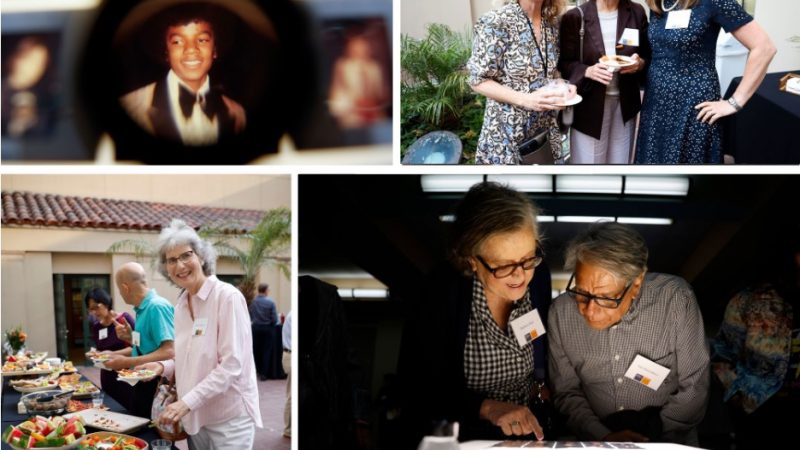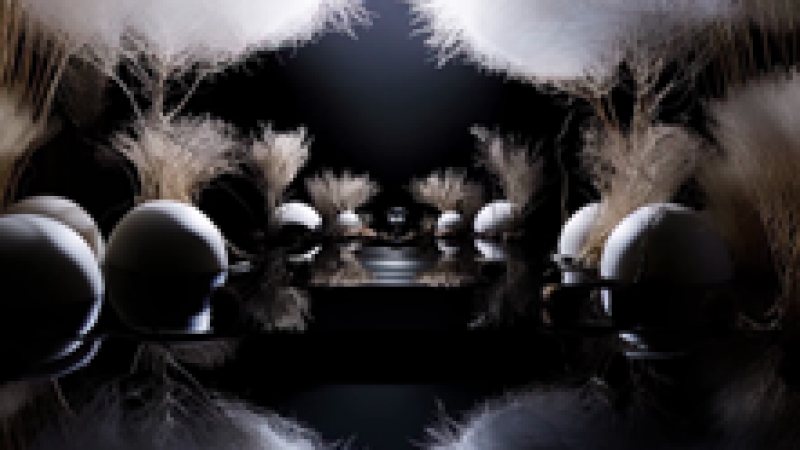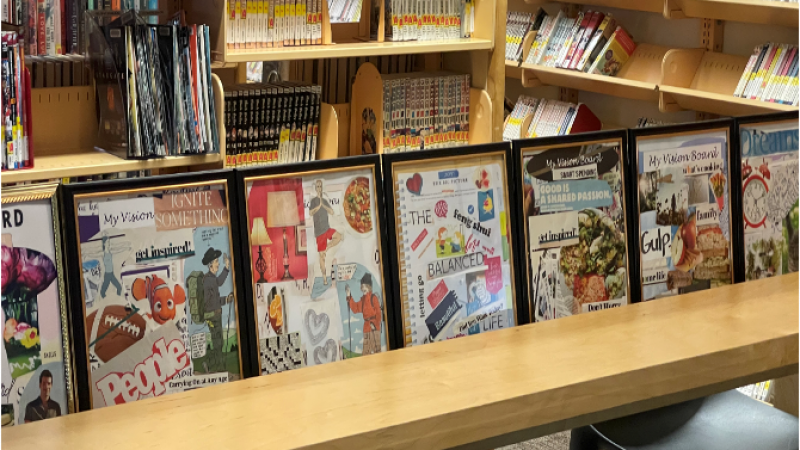Jonathan Gold contributed this essay about Saint Estèphe for the book To Live and Dine in L.A.: Menus and the Making of the Modern City. The book was part of the special exhibition “To Live and Dine in L.A.” that was hosted at Central Library in 2015.

If you had visited Saint Estèphe in the mid-1980s, a bleached-white dining room near a Coco’s in a Manhattan Beach mall, you probably ordered the chile relleno with goat cheese, the restaurant’s most famous dish. This was a different L.A. then, with Depeche Mode on the radio and Less Than Zero on the best-sellers list; the internationalist good vibes and the turquoise-magenta palette from the 1984 Olympics just beginning to fade. Spago was the dominant restaurant not just in Los Angeles but in the United States then, and casual, highly flavored Spago-style grill cuisine was in its ascendency.
But Saint Estèphe, you could tell in an instant, was something else entirely. That chile relleno, for example, was listed on the menu as “chile relleno, farci avec une duxelle et servi avec un sauce de chevre et d’ail,’’ and the crispness of both the service and the dining room also hewed to the original French. The roasted, peeled chile, when it came, was in the precise center of a very large plate, atop a pillow of cream sauce flavored with Laura Chenel’s fresh goat cheese from Sonoma, which was as ubiquitous in a certain kind of restaurant then as uni is now, and stuffed with duxelles, a rich preparation of minced mushrooms cooked down in butter that has been a part of haute cuisine since at least the time of La Varenne. This was not smoky, crisp, herbaceous California cuisine; this was classic French cooking with New World ingredients, and in fact the same duxelles had stuffed a steamed chicken breast at Saint Estèphe just a few years before when the restaurant was purely French. It was the birth of something, but of what it was hard to tell.
John Sedlar, who is chef at Rivera now, and who was the young auteur of Saint Estèphe then, is one of the most innovative chefs ever to wield a whisk in Los Angeles, a veteran of Jean Bertranou’s great La Cienega French restaurant L’Ermitage who created the institution of Modern Southwestern Cuisine at Saint Estèphe out of classical technique and the earthy ingredients he’d grown up eating as a boy in Abiquiu, New Mexico, not far from the studio of Georgia O’Keeffe.
The first blue-corn tortilla chip came out of Saint Estèphe, as a single, crunchy star served as an amuse-bouche of three corn kernels and a swirly stripe of chile puree, and Sedlar may also have been the first French-trained chef to play with chile-rubbed meat. He arranged American caviar, which was then considered vulgar, into abstracted rattlesnakes or into fierce-eyed kachina heads, like something out of a Hopi weaving. He raised the then-new art of plate-painting to new, squirt bottle–driven heights. (The Painted Desert salmon was plated on something like a Frederic Remington sunset drawn entirely in flavored sauce.)
Twenty-five years later, when Sedlar served the 1986 Saint Estèphe menu at his downtown restaurant Rivera, it was a fascinating look at the food at an important moment in Los Angeles culinary history, like a set by Led Zeppelin tucked into the context of a Robert Plant show. That chile relleno, that interplay between the goat cheese and suave chile heat, the impossible butterfat bomb of the cream sauce and the duxelles, was as precise an evocation of a specific historical moment as anything I’ve ever encountered: an old menu made flesh.
Saint Estèphe had been a restaurant in a constant state of evolution, from classic nouvelle cuisine to what it had become by 1986 or so: still a French restaurant but transformed, so that the squab was served with a buttery puree of pinto beans instead of sorrel sauce; the red-wine sauce with the duck breast, formerly in the style of Bertranou, was spiked with hominy; and the jus on the saddle of lamb was amped up with tiny, spicy chiles piquins. In just a couple of years, the sauteed sweetbreads in the style of the Parisian chef Alain Dutournier, with turnips, pistachios and orange zest, had become sweetbreads with chile con queso, the favorite guilty pleasure of every Tex-Mex aficionado, although I suspect that Sedlar’s version contained neither Velveeta nor Ro-Tel tomatoes.
But as the Don Quixote written by a 20th-century Frenchman in the Borges story was not the Don Quixote written by the 16th-century Cervantes – in the context of Rivera, Saint Estèphe became something radically different. In the 1980s, diners may have recognized a dish of eggs scrambled with goat cheese, cream and jalapenos, then put back in their shells, as a Southwest challenge to the nouvelle cuisine standard of soft-scrambled eggs with caviar. Twenty-five years later, the preparation read as nostalgic comfort food.
A plate of ravioli stuffed with carne adobada, a dish that had worked its way through the Cheesecake Factories of the world by the end of the Reagan administration, was less revolutionary than it was delicious. I loved that Painted Desert salmon, and the frieze of squirted cream sauces that framed the small piece of steamed fish — I once compared the pattern to an EKG chart — and Sedlar’s seared-scallop nachos with Roquefort. The slouchy blue-corn crepes were exactly as I remembered, down to the half-melted scoop of pumpkin ice cream. The prices on the menu were even pretty much unchanged – we were spending a lot more for nice meals in the 1980s.
But could the same menu cooked by the same chef, with the same ingredients from the same farmers possibly be the same as it was in that Manhattan Beach dining room? Clearly, it could not.









